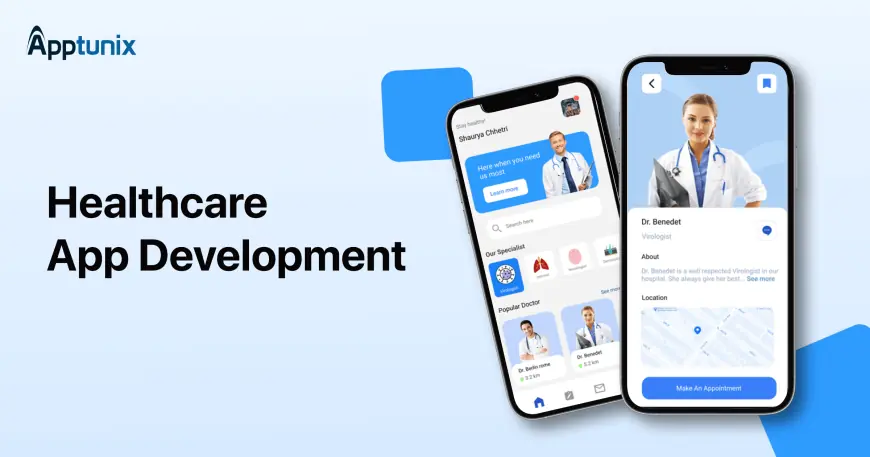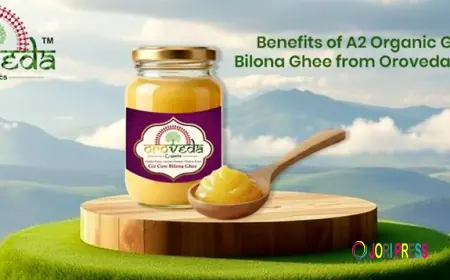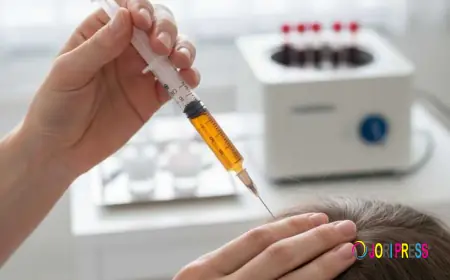Complete Guide to Healthcare App Development in 2025: Features, Process, Costs, and Types
Explore the complete 2025 guide to healthcare app development, covering key features, types, development process, costs, and the latest trends. Build your future-ready app with Apptunix.

Healthcare is no longer just a place we go—it’s something we carry in our pockets. With the widespread use of smartphones, wearables, and AI-driven platforms, the healthcare industry is experiencing one of its biggest digital shifts in history. Mobile healthcare apps are at the center of this transformation, enabling everything from remote consultations to AI-based diagnostics and personalized wellness programs.
This guide explores the full spectrum of healthcare mobile app development in 2025. Whether you’re a startup founder, health-tech investor, or medical institution planning a digital leap, this article will walk you through the essential features, development process, cost estimates, and evolving types of healthcare apps that are defining the future of medicine.
Why Healthcare Apps Matter More Than Ever
The COVID-19 pandemic may have acted as the initial catalyst for telemedicine and mobile health solutions, but the momentum hasn’t slowed since. In fact, the convenience, accessibility, and efficiency these apps offer have now become the new standard for care delivery. Healthcare is increasingly becoming patient-centered, data-driven, and technology-first.
In 2025, people expect real-time access to healthcare professionals, 24/7 symptom checkers, on-demand fitness coaching, mental health resources, and tools that empower them to take control of their well-being. Hospitals and clinics are equally invested—using apps for everything from appointment scheduling to chronic disease management.
This new digital ecosystem benefits all stakeholders: patients receive faster and more transparent care, providers improve their operational efficiency, and developers unlock new opportunities for innovation.
Understanding the Types of Healthcare Apps in Demand
The healthcare app ecosystem is vast and continuously evolving. In 2025, the most in-demand apps fall into several core categories.
Telemedicine apps remain at the forefront. These platforms allow patients to consult with healthcare professionals remotely through video or audio calls. Especially in rural areas or during emergencies, these apps provide crucial, instant access to care. Beyond consultations, some also offer e-prescriptions and digital health reports.
Another growing segment is chronic disease management apps. Conditions like diabetes, heart disease, asthma, and arthritis require ongoing monitoring and lifestyle management. These apps help patients track vitals, medication, symptoms, and even communicate progress with their doctors.
Mental health has seen a surge in mobile solutions as well. Apps focused on therapy, meditation, mood tracking, and mental well-being are empowering users to manage stress, anxiety, and depression without stigma or delay.
Fitness and wellness apps continue to be popular, but they’re evolving beyond basic calorie counters. In 2025, users expect AI-powered personal trainers, tailored diet plans, and real-time syncing with wearables. Women’s health apps for pregnancy, fertility, and hormonal tracking have also gained massive traction, offering personalized insights and proactive care.
Lastly, medical record apps that securely store electronic health records (EHRs) are playing a vital role in data transparency. Patients can now access lab results, prescriptions, scans, and treatment history with just a few taps—something that was unimaginable a decade ago.
Key Features That Define a Modern Healthcare App
To build a competitive healthcare app in 2025, you need more than just basic functionality. Patients and providers expect seamless, secure, and intuitive experiences.
The journey begins with a simple yet secure registration process. Biometric login, two-factor authentication, and patient-provider-specific dashboards are now standard. Once inside, users should find appointment scheduling smooth and frictionless, with real-time availability of doctors and the ability to reschedule or cancel without delays.
Video consultation features must offer high-definition, encrypted calling with minimal latency. It’s critical that the experience mimics a real-life consultation, complete with a digital space to share medical reports or history.
Integration with EHRs allows both patients and doctors to review vital records instantly. A patient’s full medical journey—symptoms, allergies, prescriptions—can now be accessed from the same screen where the consultation is happening.
In-app payment systems are another essential component. Whether it’s insurance-based billing, digital wallets, or traditional credit cards, users should be able to pay instantly and securely. For platforms offering premium services like 24/7 access or chronic care management, subscription models are gaining popularity.
AI is also playing a central role. Chatbots handle basic triage, answer FAQs, and send timely alerts. From reminding patients to take their medication to tracking unusual health patterns, automation reduces human error and increases engagement.
Security and compliance can’t be overlooked. Any healthcare app dealing with patient data must comply with strict regulations like HIPAA (in the US), GDPR (in Europe), and others. Encryption, consent management, and audit logs are all part of the backend that keeps the platform legally sound and ethically responsible.
A Look Into the Development Process
Developing a healthcare app isn’t a sprint. It’s a structured marathon that involves technical precision, industry knowledge, and regulatory discipline. The journey typically starts with identifying a problem or gap in the healthcare ecosystem that your app will solve.
Once the concept is clear, product discovery becomes the foundation. Market research, competitor analysis, and user interviews help you shape an app that solves real problems, not imagined ones. Defining the scope and the minimum viable product (MVP) features helps keep your budget and timeline under control.
Design comes next, and in healthcare, good design is more than just aesthetics. It must be intuitive, calming, and accessible to all age groups—including those with disabilities. The user interface must lead users naturally from one step to another, without confusion.
The development phase involves choosing the right tech stack. Developers typically use React Native or Flutter for cross-platform apps, Swift or Kotlin for platform-specific builds, and Node.js or Django for the backend. Security is implemented at every level, including encrypted databases and secure APIs.
Before release, the app goes through rigorous testing. Healthcare apps require functional testing, performance checks, user acceptance tests, and most importantly, compliance audits. A small bug or data leak in this field isn’t just a technical error—it could be a legal or even a life-threatening issue.
Once launched, the work doesn’t stop. Continuous monitoring, maintenance, and regular updates based on user feedback ensure that the app evolves with medical guidelines and user expectations.
How Much Does It Cost to Build a Healthcare App in 2025?
Cost is one of the most frequently asked questions by entrepreneurs and healthcare providers alike. The answer depends on multiple factors—complexity, features, design requirements, third-party integrations, and of course, the development team’s location.
For a basic wellness or fitness app with simple tracking features, development could cost anywhere from $10,000 to $20,000. If you’re building a full-featured telemedicine platform with video consultations, EHR integration, and insurance payment systems, you could be looking at $20,000 to $30,000 or more.
Apps that require AI, blockchain security, multi-language support, or interoperability with hospital systems may go well beyond $30,000, especially if you’re targeting enterprise-grade performance and compliance.
Keep in mind that these figures don’t include post-launch updates, cloud hosting, server maintenance, and marketing. Healthcare apps need regular updates to stay relevant, so budget accordingly for long-term sustainability.
Tech Trends That Will Shape the Future
2025 is a pivotal year for health-tech, and several technological advancements are leading the charge. Artificial Intelligence is being used not only for chatbots but also for diagnostics, predictive care, and patient monitoring. An AI-powered symptom checker can save hours of physician time and provide instant support to users.
Blockchain is quietly gaining traction for its ability to secure patient data and ensure transparency in medical records. It’s particularly useful in cases where multiple providers need access to the same patient data without compromising security.
Voice-activated interfaces are improving accessibility. With voice commands, patients can schedule appointments, ask health-related questions, or hear medication reminders—ideal for elderly users or those with visual impairments.
Another area to watch is 5G. With ultra-fast connections, 5G enables real-time video consultations, remote surgeries using AR, and seamless wearable integrations. The ability to sync huge amounts of data without lag opens doors to real-time diagnostics and remote care like never before.
Remote patient monitoring (RPM) is no longer just a buzzword—it’s becoming a core feature. With connected devices feeding data to apps in real-time, doctors can monitor patients’ vitals, oxygen levels, and even mental health remotely and intervene before a crisis occurs.
The Importance of Compliance and Security
In healthcare, trust is everything. A single data breach can ruin credibility overnight. That’s why regulatory compliance is not just a legal requirement—it’s a strategic advantage.
In the U.S., all healthcare apps must comply with HIPAA, which dictates how patient information should be handled, stored, and shared. In the EU, GDPR plays a similar role. For global apps, ISO certifications and HL7/FHIR compliance for health data exchange are also recommended.
Beyond regulations, ethical handling of data is key. Users should have full transparency on how their data is used, who has access to it, and how long it’s retained. Offering privacy dashboards, consent toggles, and secure backups will go a long way in building user trust.
How Healthcare Apps Make Money
A well-built healthcare app can also be a profitable venture. The most common monetization model in 2025 is subscription-based. Users pay monthly or yearly fees for access to advanced features like unlimited consultations or AI health analysis.
Some apps use a pay-per-service model, where users pay each time they consult a doctor or order a test. Others adopt the freemium model—offering basic features for free and charging for personalized plans, wellness coaching, or mental health support.
In certain cases, partnerships with clinics, labs, or fitness brands generate affiliate revenue. Enterprise apps are also licensed to hospitals, insurance companies, or corporations that want to offer healthcare benefits to employees.
Just remember: monetization must always align with ethics. In healthcare, user trust is more valuable than any short-term gain.
Final Words: The Future Is Now
Healthcare app development in 2025 is more than just a digital trend—it’s a fundamental shift in how care is delivered, accessed, and experienced. As patients seek convenience, transparency, and personalized attention, the demand for intelligent, secure, and intuitive healthcare apps continues to rise.
However, building such applications requires more than just an idea. It demands deep industry understanding, technical expertise, compliance knowledge, and a reliable development partner.
That’s where Apptunix steps in.
With years of experience in healthcare technology, Apptunix empowers startups, clinics, hospitals, and enterprises to design and develop next-generation healthcare mobile apps that are compliant, scalable, and built to perform. From telemedicine to fitness tracking, mental wellness to EHR integration, Apptunix delivers tailor-made solutions aligned with your business goals and the latest digital health standards.
So, whether you’re just exploring the possibilities or ready to build a transformative healthcare app, let Apptunix be your partner in innovation—because the future of healthcare is mobile, and the time to lead is now.
What's Your Reaction?
 Like
0
Like
0
 Dislike
0
Dislike
0
 Love
0
Love
0
 Funny
0
Funny
0
 Angry
0
Angry
0
 Sad
0
Sad
0
 Wow
0
Wow
0

















































